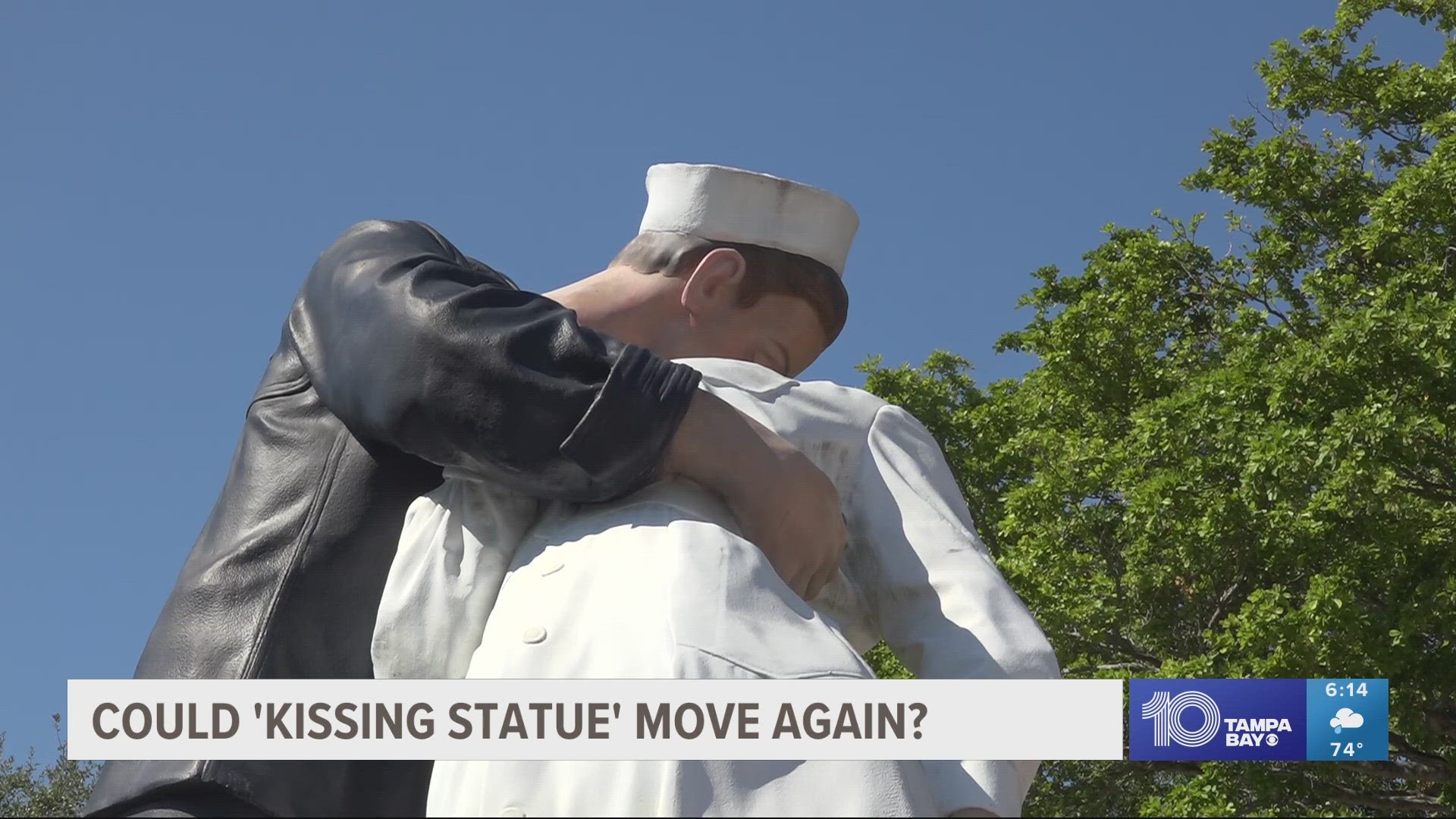SARASOTA, Fla. — A landmark statue in Sarasota that recaptures an iconic time in history could be moved again.
The statue titled "Unconditional Surrender," which many often call the "Kissing Statue," is currently located at the Bayfront Park in downtown Sarasota.
The 26-foot-tall statue is part of a series of computer-generated statues created by sculptor Seward Johnson. In total, there are five such statues located in Normandy, France; San Diego, California; Pearl Harbor, Hawaii and Hamilton, New Jersey.
The one in Sarasota is the original in the series and was created in 2005.
"I enjoy looking at it. I was in the military and stationed in Germany in the early 60s," Bill Rowe said.
Rowe is a veteran from Burlington, Vermont. He and his wife Lynn said they were both born during World War II and find memories of that era very nostalgic.
The statue was inspired by a photo taken by Life photographer Alfred Eisenstaedt, which shows a sailor – later identified as George Mendonsa of Rhode Island – planting a kiss on a nurse, Greta Zimmer-Friedman, on a street near Times Square in New York City on August 14, 1945. It is one of the most iconic photos which represents the mood of the country at the time and marked the end of the war.
"We know the feelings of joy when the war ended," said Lynn Rowe, a retired librarian.
"I think it's a good representation of how it was back in those days in the Navy and how people met and I just think it's romantic," said Karen McKinley of Ellenton.
The statue was moved to the Bayfront Park in 2021 to make way for repairs to the Gulfstream Avenue Roundabout.
Now, Sarasota City Commissioner Erik Arroyo says it's time to move it again because he feels its current location is not ideal for visibility.
"Right now, it's tucked away and very difficult to see, not only from the street but even when you're walking in the park," Arroyo said. "You have to really pretty much get right next to it to see it."
Arroyo wants it to stay near the bay but in a more prominent location where it is not obscured by trees and light poles.
"Where you can see it when you're going to the bridge, when you're coming to and from the islands, and of course, when you're downtown," Arroyo said.
Arroyo said he has heard from many veterans and community members with those concerns.
However, the suggestion to return it to the roundabout has raised concerns about whether it is judicious use of taxpayers' funds as well as the safety of drivers, pedestrians and the statue itself.
"It's probably not going to get hit here, although I'll never say never," Bill said.
"It's visible here and you want people to be able to see it," Lynn Rowe said. "You don't want accidents with people slowing up to see it."
There's also the most recent controversy about the non-consensual nature of the kiss. In 2020, someone vandalized the statue and spray painted it with the phrase "#MEtoo."
"This is something that the community needs to tell us what they feel about it because, of course, if you ask 10 different people, then you get 10 different opinions," Arroyo said. "Most importantly, regardless of what side you are on, the people that were featured in this picture that later became this statue had no problem with the statue, and I think that is crucial and a part of the story."
"It's a piece of art and I think it belongs on the waterfront," McKinley said.
Arroyo said the issue has not yet been formally presented before the city commission or any meeting agenda, but he would like to hear feedback from the community about the best location for the statue or if the park should become its permanent home.

